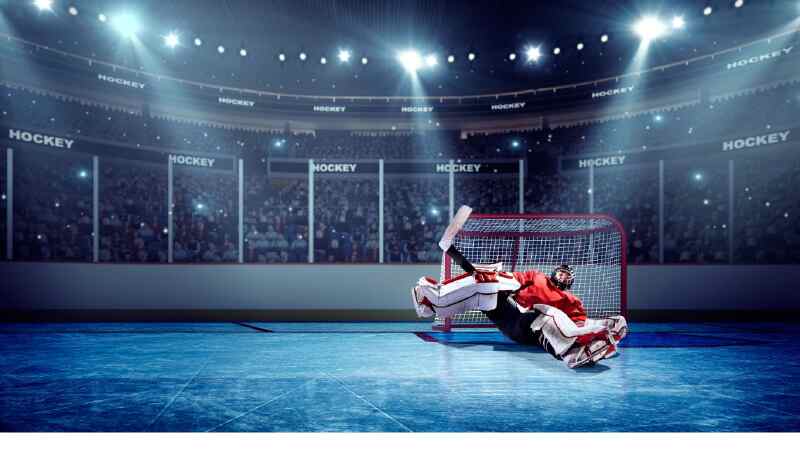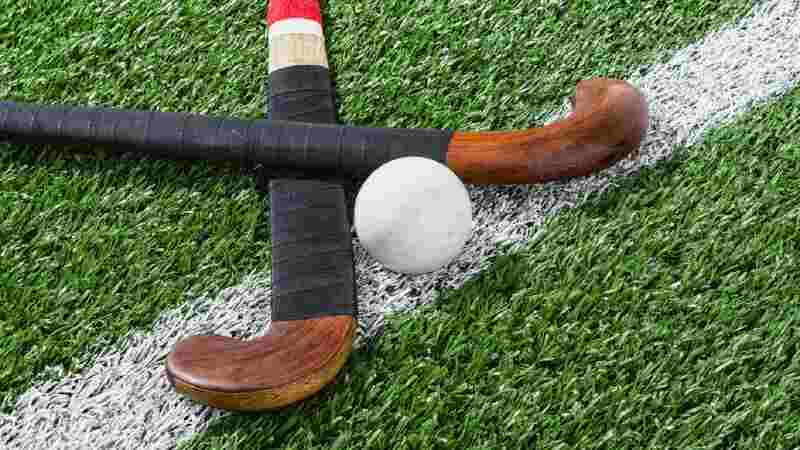
Ice hockey and field hockey are two distinctly different types of hockey. Ice hockey, which is more popular in Canada, the U.S., the Scandinavian countries, and Eastern Europe, is played on an ice rink with skates, sticks, and a puck that players use to shoot goals into the opposing team’s net. Suppose you asked about field hockey vs ice hockey popularity.
In that case, Field hockey, a far less popularized version of the game found mostly in warm climates such as central and southern Europe, Australia, or India, is played with curved sticks and a ball that needs to be propelled into the opponent’s goal for points. While both games have their differences, they share some similarities: they involve teams competing against each other to score goals.
However, some differences exist, such as teammate number, rules, surface, and playing area. Read on and learn more about the difference.
The Difference Between Field and Ice Hockey:
Table of Contents
Teammate Number
In ice hockey, a team’s standard number of players is six. Each team typically consists of one goalie to defend against shots from the opposing side, two defensemen to guard the defensive zone and maintain possession in the offensive zone, and three forwards to create plays and convert opportunities into goals. This formation can change if a penalty is called during the game, which results in fewer players on the rink for a time period.
Field Hockey requires more skaters than Ice Hockey, typically 11 players per team. There is still one goalie, but there are also 3 forwards to create plays and score goals, 4 midfielders to transition between defending and attacking zones, and 3 defenders to guard against opposing teams’ attacks. The variation in this formation allows teams to adjust their strategy to adapt to different opponents’ play styles.
Consequently, field hockey teams require more detailed planning and tactical awareness than ice hockey teams to succeed.
Game Rules
There is very much difference between field hockey vs ice hockey rules. As Ice hockey is divided into three periods, each lasting 20 minutes, with the total game time being 60 minutes. The reason behind this particular structure of the play is the maintenance of the ice surface. The playing quality would be greatly impacted without sufficient care and regular resurfacing.
Therefore it is necessary for the rink to have at least two breaks during a game session, meaning that a half-time interval alone does not provide enough opportunity for maintenance.
On the other hand, field hockey follows a different game format than its icy counterpart; often consisting of two halves in which each half runs for 35 minutes or when structured as quarters, four intervals of 15 minutes make up one complete game.
While needing almost constant physical upkeep during a match (due to rough contact on the playing surface), this also provides coaches and players more tactical flexibility than ice hockey, as changes can be made regularly without compromising too much time and energy from any participants.
Surface
Difference between ice hockey and field hockey expectations regarding their necessary playing surfaces. Ice hockey requires a flat and solid surface, while field hockey must have enough friction to maneuver the ball quickly across different directions; neither is possible without specific maintenance and materials that are able to endure these conditions through the intense physicality of either sport. Players seeking better performance may have to invest a lot in synthetic materials, regular cleaning, repair, smoothing, and resurfacing activities, which may increase costs dramatically.
Sticks Holding Rules
Ice hockey sticks generally consist of wooden materials or sturdier carbon fiber threads, while field hockey sticks utilize composite materials like fiberglass and carbon. Field hockey players hold the stick with their left hand at the top, regardless of which hand is their dominant one, while ice hockey players receive a stick suited for their dominant hand only.
With its variety in design, the right selection of a hockey stick can certainly bring out any player’s strengths while playing either sport. If you asked field hockey stick vs ice hockey stick difference, then there isn’t much difference to talk about rather than holding rules and materials those use. Such as ice hockey uses wooden or sturdier carbon fiber; on the other hand, field hockey uses fiberglass and carbon.
Penalties and Fouls
Fouls and penalties are a major factor in all sporting events, mainly protecting players from dangerous or unfair play. Even though hockey of any kind is quite similar, there are differences in the fouls and penalties that can be enforced.
In field hockey, the ball cannot hit your feet or body. If it does, possession is given to the opposing team as a penalty. Additionally, no third-party interference between two players is allowed while competing; however, you are not allowed to raise your stick above waist level as this will penalize you.
Contrarily, in ice hockey, there is no prohibition on how high you can raise your stick above waist level; although if it hits an opponent higher than their neck, a penalty will still be enforced. Third-party interference between opponents is permitted, and sticks may touch other players during gameplay but must not be too rough or aggressive else a penalty will occur. Tackling from behind an opponent is allowed if playing toward the puck without holding, hooking, or tripping them, which would result in a penalty against the offending player.
Offsides
Offside is an important rule in ice hockey that helps to discourage forwards from pushing too far ahead and creates a much more balanced gameplay. It is determined by two blue lines measuring the boundary of the offensive zone.
When an offensive player crosses this boundary before the puck crosses it, it is considered offside, and either the whistle will be blown for a faceoff, or the offensive team must take their hands off the puck so that the defensive team can gain control. This rule serves to help create fairness on both sides of the game and encourages passing instead of just driving straight toward the goal.
On the other hand, field hockey does not have any such rule in place. Instead, the game avoids physical contact with opposition players to maintain fair play. Players are allowed to run wherever they like on the pitch as long as they do not obstruct another player’s path or get involved in an altercation. Field hockey does not require players to stay within any particular boundaries meaning that there is no issue with going offside, and teams are free to attack at all times without fear of being penalized.
Is Ice Hockey Harder than Field Hockey?

There is no clear-cut answer when it comes to comparing the difficulty of ice hockey and field hockey. This debate has been going on for many years through all hockey athletes. All ice hockey players get mocked by ice hockey players saying, ” field hockey isn’t a real sport’.
However, both sports require skill, athleticism, and strategy. They also involve different levels of physicality and contact, which can make one more difficult than the other depending on an individual’s preferences. It happens because ice hockey contains so much running through all the gameplay. Ice hockey becomes more demanding, depending on your position.
Also, If you play mid-field as I do, you must run constantly. You run to the 50-yard line when they call a “corner” and sprint back down the field to help your team defend the ball when the opposing team passes it into the circle. That’s the main reason ice hockey is considered to be harder than field hockey. But no matter what you decide to play, be sure to wear the best field hockey shoes.
FAQ:
1. Why is field hockey not popular?
The reasons for field hockey’s comparatively lower profile include media influence, geographic location, visibility on the professional level, equipment cost, facility investment, and safety regulations. Accessibility is also a factor – because ice hockey can be played year-round indoors, it appeals to more people than a seasonal sport that must be played outdoors. Plus, ice hockey has so many exciting elements (dramatic physical clashes between opposing players, aggressive goal tending; fast shots in sudden-death situations) that it captures viewers’ attention unlike any other sport playing on ice surfaces.
2. Is ice hockey older than field hockey?
It is generally accepted that for a long time, it was generally accepted that English field hockey and Indian lacrosse were the ancestors of ice hockey, which British soldiers spread across Canada during the early 1800s. So, yes, ice hockey is older than field hockey.
3. What country won the most ice hockey games?
Nine gold medals and 16 total medals have been won by Canada in 24 appearances. There are seven gold medals awarded to the Soviet Union in all time, and there are eleven medals awarded to the United States (two gold, eight silver, and one bronze).
Conclusion
It’s clear that there are many differences between ice hockey vs field hockey. Both can be perfect sports for any athlete. And there are many best youth hockey skates for you to practice any of the hockey forms. Be the best form of hockey and establish a career in that.